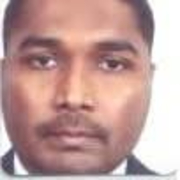

OpenText Behavioral Signals and Gurucul Next Gen SIEM are competing products in the enterprise cybersecurity space. Gurucul Next Gen SIEM is often seen as having the upper hand due to its comprehensive capabilities that justify its higher pricing.
Features: OpenText Behavioral Signals offers real-time behavior analysis, predictive insights, and cost-effective threat detection. Gurucul Next Gen SIEM provides advanced analytics, machine learning-driven threat detection, and comprehensive reporting tools.
Ease of Deployment and Customer Service: Gurucul Next Gen SIEM provides a flexible deployment model adaptable to various IT environments, along with proactive customer service. OpenText Behavioral Signals has a straightforward deployment process, although it may be less tailored to specific needs.
Pricing and ROI: OpenText Behavioral Signals is noted for competitive pricing and a favorable return on investment for cost-focused organizations. Gurucul Next Gen SIEM has a higher setup cost, which aligns with its extensive threat management features, potentially leading to better ROI.
| Product | Market Share (%) |
|---|---|
| OpenText Behavioral Signals | 0.5% |
| Gurucul Next Gen SIEM | 0.3% |
| Other | 99.2% |


Gurucul Next Gen SIEM is used for threat detection and response, leveraging machine learning to identify anomalies and breaches. It provides advanced analytics, security event investigation, and compliance management.
Organizations use Gurucul Next Gen SIEM primarily for its robust capabilities in threat detection and response. Its machine learning algorithms effectively identify anomalies and potential breaches, making it a key tool for preventing insider threats. The platform features advanced analytics, real-time security event investigations, and comprehensive compliance management. Its automated workflows and integration capabilities enhance security incident management across environments, while its scalability meets the demanding requirements of large enterprises with complex security needs.
What are the key features of Gurucul Next Gen SIEM?Implementing Gurucul Next Gen SIEM in industries such as finance, healthcare, and retail significantly improves threat detection and response. Finance sectors benefit from its advanced analytics and compliance management, while healthcare organizations leverage it to protect patient data. Retailers use its real-time analytics and machine learning capabilities to mitigate risks such as insider threats and breaches.
OpenText Behavioral Signals enhances organizational security monitoring with its robust correlation engine and streamlined dashboard, offering customization to suit different environments like airports or banks.
OpenText Behavioral Signals effectively integrates device logs through its strong correlation engine. The platform's customization options enable tailored alerts to match specific use cases, such as airports or banks. Although it needs more frequent updates to stay aligned with global incidents, it provides a centralized dashboard that ensures comprehensive visibility across networks. Users find the interface intuitive, making rule writing and report access easy, aiding in a comprehensive understanding of the network environment.
What are the key features of OpenText Behavioral Signals?In industries like banking and airports, OpenText Behavioral Signals is implemented for gathering global intelligence from the cloud. It notifies organizations about global attacks and updates its correlation engines. These industries utilize the platform for monitoring and analyzing logs from network devices, security log management, and addressing network challenges like link failures and unauthorized login attempts, ensuring better security posture with behavioral analytics and log integration using Unix and Microsoft-based connectors.
We monitor all Security Information and Event Management (SIEM) reviews to prevent fraudulent reviews and keep review quality high. We do not post reviews by company employees or direct competitors. We validate each review for authenticity via cross-reference with LinkedIn, and personal follow-up with the reviewer when necessary.